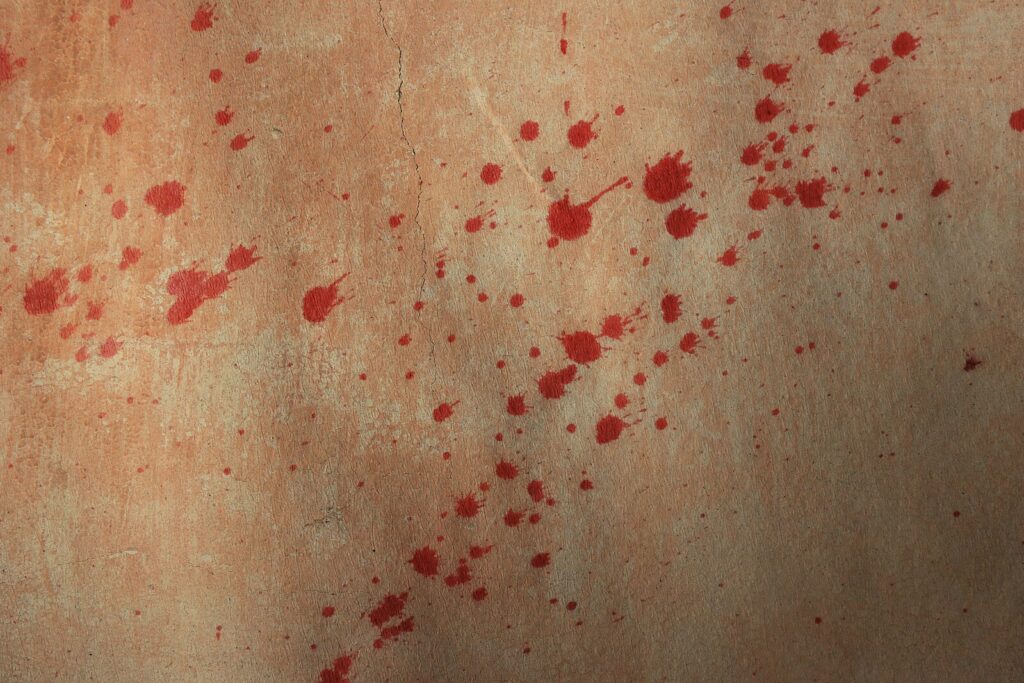Now Reading: Forensic Knot analysis
-
01
Forensic Knot analysis
Forensic Knot analysis
Introduction:
Most criminal cases related to tying of knots feature frequently. In such conditions, it becomes necessary for an investigator to be equipped with the knowledge of ‘Knot analysis’ so that significant clues can be extracted from the nature of the knot that has been tied. The preliminary examination involves the identification of Knot type and determination of its chirality. The principles for Knot analysis should be referred to for relative interpretation. Such systematic analysis of Knots obtained from the scene of crime can help deduce the handedness of an individual and type of crime, whether suicide or homicide.
Standard Concepts:
When dealing with the tying material, e.g., rope, cloth, chain, fibre, etc., there are three basic terminologies (knot landmarks) that need to be known, they are:
- Wend – It is the terminal end of the material (rope) used to tie a knot.
- Stand – Segment of the material (rope) that isn’t included in the tying of knot is termed as ‘stand’.
- Bight – Part of the material (rope) included within a knot is termed ‘bight’.
Some commonly observed Knot types are:
- Overhand knots
- Overhand loops
- Overhand slip lops
- Water knot
- Figure-eight knot
- Half knots
- Half hitches
- Clove hitches
- Granny knots
- Granny bow
- Reef bow
- Reef knots (Hercules knot)
- Prusik knot
- Bowlines
- Fisherman knot etc.
Multiple approaches have been formulated to classify the knot types. Classic division of the knots that is used widely is as follows:
- Stopper knot/knot – It is a tangled mass located anywhere on the tying material with is intact without any support and absence of loop. E.g., Overhand knots, Figure Eight knots.
- Loop knot/loop – This is a type of knot that possesses loop(s) in its structure. It can be tied to support or free, immovable, or adjustable. Few loop knots also remain intact even when removed from support. E.g., Overhand Knots, Overhand Loops, Overhand Slip Knots, and Overhand Nooses.
- Hitches – When the knot tied to certain support reduces into a stopper knot on the removal of the point of attachment, such a knot is referred to as a hitch. E.g., Half Hitches, Cow Hitches, Clove Hitches, Prusik Hitches, Girth Hitches, etc.
- Bend – When two wends of a tying material need to be hooked together, the knot employed for this purpose is termed as a ‘Bend’. It is generally used to wrap parcels, tie shoelaces, etc. E.g., Granny knots, Water knots, Reef knots, Surgeon’s knots.
Topological Knots: Such knots are theoretical which cannot be untied to form a single, long strand due to the absence of wands. They are identified as single-dimensional curve lines contained in three-dimensional space. In such knots, the determination of several crossing points is considered.
Chirality: Most of the knots that can be found in everyday life have their mirror images. Such knots are referred to as ‘Chiral’ knots, while the knots which don’t have complementary mirror image are termed as ‘Achiral’ or ‘Amphichiral’ knots. The mirror images displayed by such knots are known as ‘enantiomers’ or ‘enantiomorphs’. In forensic science, the S/Z nomenclature system is used for outlining composite knots. However, for Granny knots, S/S or Z/Z labelling is used and for Reef knots, S/Z or Z/S differentiation is used. Depending upon the chirality, the labelling of knots varies.
Basic Principles of Forensic Knot analysis:
Behavioral observation of more than 6000 individuals in various groups was carried out by Robert Chisnall, Canada (2010) over an extensive period of 25 years through fundamental informal means and supported by empirical evidence. Subjects were instructed to tie knots and this intrusive behaviour was observed repeatedly. This study eventually derived standard principles and guidelines regarding analysis:
- Tying behavior is consistent and reproducible.
- When basic tying tasks are performed, people tend to tie one enantiomer more than the other. It is nearly impossible to reverse knot chirality.
- In many tiers it has been found that the same enantiomer is produced regardless of the number of available bands, however, few tiers produced one enantiomer due to the availability of single want, and the chirality was reversed with two wands.
- The switching of wends results in a reversal of chirality.
- Alterations such as excessively long wends and pre-existing knots help reverse chirality.
- Exposure to awkward tying positions such as overhead tying causes reversal of chirality.
- Initiation and termination of a series of half-hitches can reverse chirality.
- Tying slip loops and bows can reverse chirality.
- Provision of knowledge of sophisticated knots to a tier doesn’t promise that the tier will tie such knots out of habit.
- Most people often tie unsophisticated knots.
- In the general population, S enantiomer was produced more than Z enantiomer.
Significant Inferences:
It has been observed that common people usually tend to tie the simplest form of knots, such as overhead knots and half hitches. Apart from this, though only 5% of people who belong to a certain profession, who have received special training in the sector in which unusual knots need to be tied, do not tend to tie sophisticated knots.
It is also observed that there isn’t a definite correlation between tier handedness and the chirality of knots. Though Sinistrals (right-handed volunteers) are found making S-enantiomers more often, they are also found making Z-type knots in certain situations.
This is also observed with Dextrals (left-handed volunteers). Another remarkable observation is that, regardless of having prior knowledge about tying a sophisticated type of knot, this behaviour isn’t translated while tying. However, few people who have no clue of how to make reef knots, tied it, indicating that people can also tie difficult knots out of self-discovery. Also, the number of wends available for tying knots can provide forensically important evidence as it plays a role in the reversal of chirality.
In hanging cases, it should be noted that fixed type of knot is tied in 64.4% of hanging deaths and sliding type (running) knot to be tied in 21.3% of cases. However, in the rest of the cases knot type cannot be determined due to the removal of ligature. In maximum cases, it can be found that the knot has been placed at the back region of the neck. This is important in determining the mechanism of death as gross inconsistencies with this matter is an indication of a suspicious death.
Differences between homicide and suicide:
Most suicides are associated with hanging and involve partial or complete suspension. It is uncommon in homicides. Slip knots are prevalent in self-tying cases. At the knot location, an inverted ‘V’ mark can be found present predominantly in soft neck tissue. External tying depicts double-neck ligatures with fixed or immovable knots (three to four). However, evidence of single ligature is commonly observed in suicide cases.
Case study:
An FIR was filed in a village about a woman hanging from a bamboo beam of her own house. When the officers acknowledged the report, they drove to the crime scene. In the meantime, the husband (accused) had cut the rope to claim that he was trying to save the victim, thus simulating the crime scene to claim suicidal hanging. The rope was cut into two pieces, one was which was left hanging from the bamboo beam and the other end was found around the victim’s neck.
Autopsy findings:
The autopsy report suggested that the deceased was about a 28-year-old female of average built. One ligature mark was present around her neck. The brain, spinal cord, larynx, trachea, lungs, pericardium, heart, liver, spleen, kidneys were found congested and the uterus was also found empty. There was a deformity at the 3rd and 4th right ribs at the mid-clavicular lining. A deep and transverse ligature mark was present above the thyroid cartilage around the neck. Bruising and abrasion were present on the left side and in front of the neck about the edges of the ligature mark. Superficial mark of the knot was also present on the left side of the neck.
Forensic evidence:
- One deep ligature mark encircling the victim’s neck indicated homicide.
- Nail scratch mark on cheek and neck.
- Eyes and mouth without tongue protrusion were partially open.
- Absence of dribbling saliva.
- No signs of discharge of urine/faecal matter.
- Absence of any support for the victim to climb up to the hanging point.
- Testimony of suspect was dubious; not supportive of suicidal hanging.
Results:
It was found that the accused attempted to simulate the crime scene to make it appear like a suicide. However, based on circumstantial evidences, forensic evidence, and autopsy findings, it was declared that it was a case of homicide and the husband of the deceased (accused) was convicted.
Conclusion:
Careful observation and analysis of Knot obtained from the crime scene is extremely important for the deduction of significant leads. Lack of training and appropriate analytical skills can render the piece of evidence worthless. Thus, identification of knot type, chirality determination, knot position, and condition of Knot should be done carefully and following the standards. The principles of Knot analysis should be considered and the inferences must be drawn accordingly.
References:
1) R.C. Chisnall (2016), Structural recognition and nomenclature standardization in forensic knot analysis, Sci Justice.
2) R.C. Chisnall (2010), Basic principles of Forensic knot analysis: A qualitative study of tying behavior, Investigative Sciences Journal, Vol. 2(3).
3) R.C. Chisnall (2010), Knot Tying habits, Tier Handedness and Experience, Journal of Forensic Sciences, Vol. 55(5).
4) V. Ambade, S. Meshram, J. Borkar (2014), Ligature Material in hanging deaths: The neglected area in Forensic Examination, Egyptian Journal of Forensic Sciences.
5) R.C. Chisnall (2020), Distinguishing between Homicide and Suicide knots and ligatures: A comparative analysis of case and survey data, Journal of Forensic Sciences.
6) R.C. Chisnall (2011), An analysis of more than 100 cases involving knots and ligatures: knot frequencies, consistent tying habits and noteworthy outliers, Australian Journal of Forensic Sciences, Vol. 43(4).
7) R.C. Chisnall (2016), Analysing knot evidence: associating innate-habits with sophisticated tying tasks, Scandinavian Journal of Forensic Science, Vol. 22(2).
8) S. Nath, R. Majumder, HK Pratihari (2020), Homicide hanging–a rare case report, Forensic Research & Criminology International Journal, Vol. 8(1).








